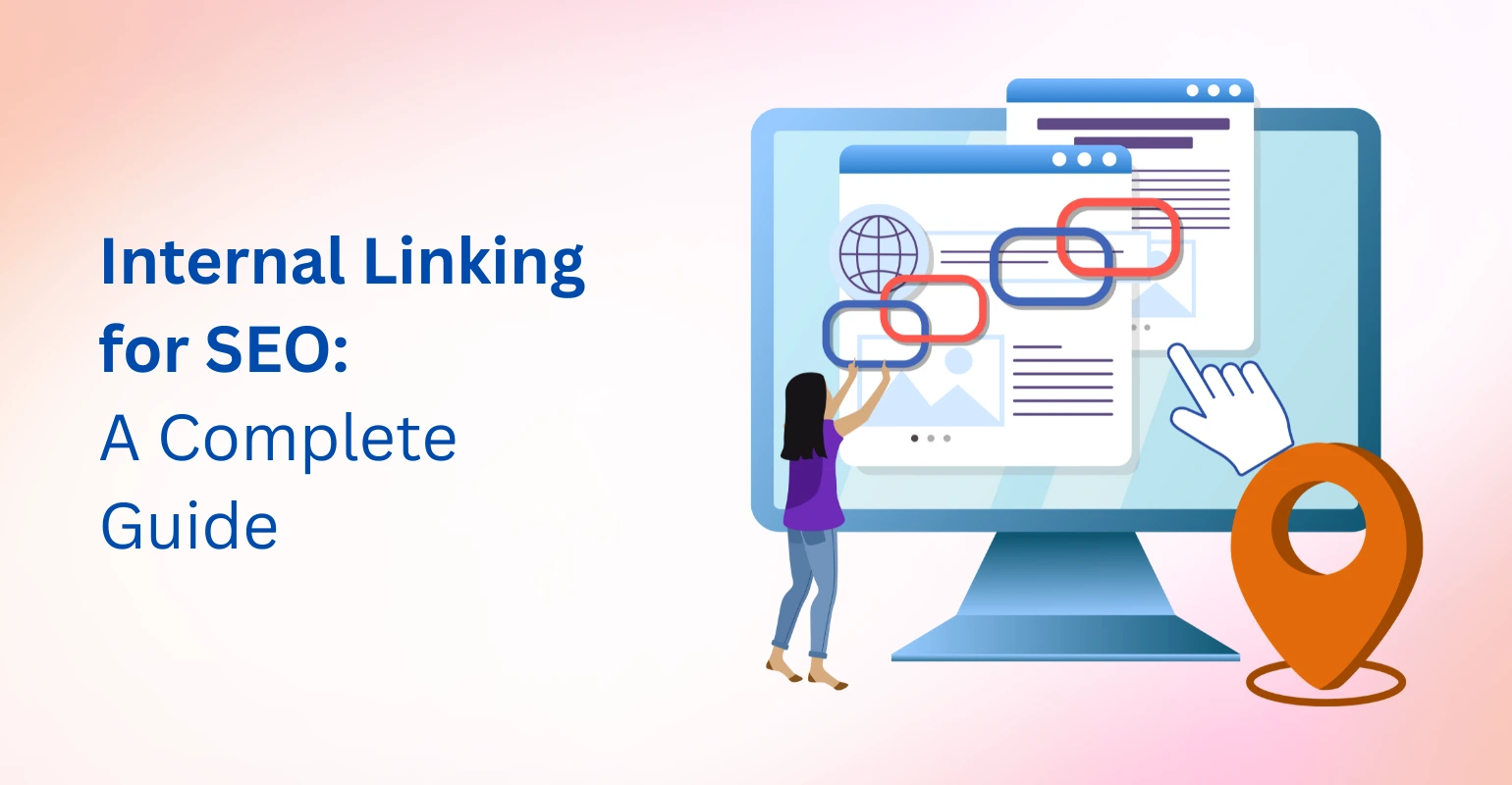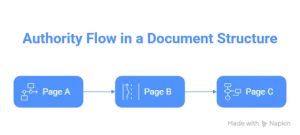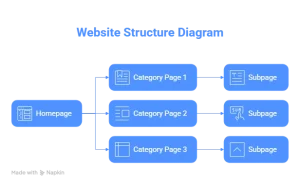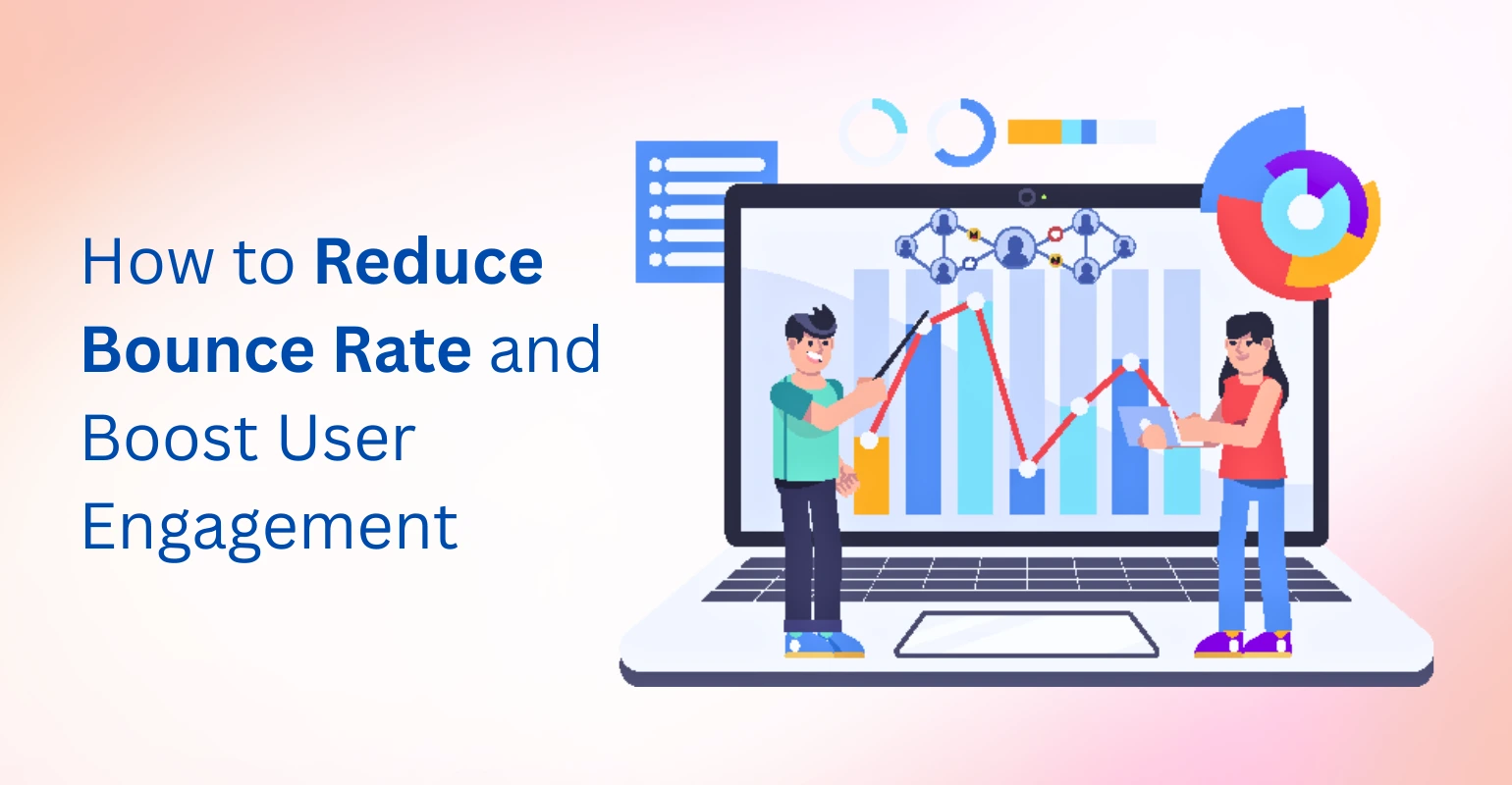blog
Internal Linking for SEO: The Complete Guide to Site Authority & Structure

Internal linking remains one of the most powerful SEO techniques. It is still underrated by many website owners. Search engines now depend heavily on internal link signals to understand your website structure. These signals help Google interpret how your pages relate to each other.
They also help search engines evaluate your content relevance and topical depth. Strong internal link structures guide crawlers through your most important pages. They help Google identify your primary topics and supporting content groups. This improves your overall topical authority and trust.
A well-planned Internal Linking strategy improves rankings, crawlability, and user engagement. It ensures your pages do not remain isolated or ignored. Internal links also direct users toward deeper content that answers their intent. This boosts dwell time and reduces bounce rates. Both factors send strong quality signals to Google.
Google’s 2024–2025 updates focus on semantic context and helpful content. These updates reward websites that build logical and meaningful content connections. Internal links help you meet these expectations with ease. They create a clear and structured content ecosystem throughout your website. This guide will show you how to build a strong internal linking system. It will also help you support long-term SEO growth.
What Is Internal Linking for SEO?
Internal links are hyperlinks that connect one page of your website to another. These links guide users across your site and help them discover relevant information faster.
Internal links also help search engines understand how your pages are organized and how each page supports the overall structure of your website. When these connections are clear and consistent, Google can interpret your content more accurately and crawl important pages more efficiently.
Types of Internal Links
| Type | Purpose | SEO Impact |
|---|---|---|
| Navigation links | Menu, header, footer | Medium |
| Contextual links | In-content links within paragraphs | Very High |
| Sidebar links | Category or tag lists | Low–Medium |
| Breadcrumbs | Click path structure | High |
| Image internal links | Images linked to pages | Medium |
Internal Linking for SEO matters because:
- It passes link equity (PageRank) from strong pages to weaker pages
- Helps Google crawl and index new or updated pages faster
- Establishes topical relationships between related articles or sections
- Boosts user journeys and increases time spent on your website
- Strengthens your website’s overall authority and trustworthiness
A strong internal linking system ensures every important page receives visibility, authority, and SEO value.
How Internal Linking Works
1. Crawlability & Indexation
Googlebot depends on internal links to discover, crawl, and revisit your pages. These links act like roads that guide crawlers from one section of your site to another. If a page has very few or no internal links pointing to it, Google sees it as an orphan page.
Orphan pages are extremely difficult for search engines to find and often remain unindexed. Websites with many orphan pages often need a thorough technical SEO audit to fix crawl issues. When content stays unindexed, it cannot appear in search results, no matter how valuable it is.
A simple rule:- If Google can’t find it, it can’t rank it.
Internal linking ensures your important content is always accessible and visible to search engines. It also helps crawlers understand update frequency, content relationships, and priority levels.
2. Distributing Link Equity
Every page on your site carries a certain level of PageRank, even if you cannot see it directly. Internal linking helps transfer this authority from high-performing pages to new, low-performing, or strategic pages. This flow of authority strengthens your overall SEO ecosystem.
When a top-ranking article links to a service or product page, it passes meaningful authority and context. This helps that page rank faster and stronger.
Example:
Your high-performing blog → links to → product/service page = instant topical support and authority gain.
This is one of the most effective ways to boost page visibility without external backlinks.
3. Structuring Your Site Architecture
Internal linking creates the backbone of your entire site structure. It helps build:
- A clear hierarchy
- Meaningful content groups
- Logical pathways
- Topic clusters and hub pages
In 2025, Google values topic depth more than keyword stuffing. A strong linking structure shows Google that your content covers a subject thoroughly.
4. User Experience Benefits
A well-organized internal linking system enhances your user experience. It increases:
- Time-on-page
- Pages-per-session
- Bounce rate improvement
- User satisfaction signals
These behavioral signals align perfectly with Google’s Helpful Content system and indirectly contribute to stronger rankings.

Image Source: Created using Napkin AI.
The Benefits of Internal Linking for SEO
Internal linking delivers far more value today than it did a few years ago. With Google’s increased emphasis on semantic understanding, user experience, and content structure, internal links now influence several key ranking factors.
They help search engines interpret your content, and they guide users toward the most important pages on your site. A strong internal linking strategy improves both visibility and conversions, making it an essential part of modern SEO.
1. Boosts Keyword Rankings
Contextual internal links with well-crafted anchor text help Google understand the primary focus of a page. They reinforce keyword relevance and clarify the page’s role within the topic cluster.
Optimized anchors create strong semantic signals, but avoid repeating exact match anchors too often. The goal is natural and meaningful linking that supports your ranking strategy without appearing manipulative.
2. Faster Indexation
Internal links often index pages faster than relying solely on XML sitemaps. When you connect new content to strong, authoritative pages, Google discovers it sooner. This speeds up the indexing process and helps fresh content enter search results more quickly.
3. Strengthens Topical Authority
When related content pieces interlink naturally, Google identifies your site as a credible source on that subject. Internal linking helps create depth, allowing you to build strong topic clusters and demonstrate Expertise, Experience, Authority, and Trust (E-E-A-T).
4. Improves Crawl Efficiency
Internal linking improves crawl efficiency, especially on large websites with deep content structures. Proper links help Google access older or buried pages without wasting crawl budget.
5. Enhances Conversion Paths
Internal links guide users from high-traffic informational posts to:
- Service pages
- Lead magnets
- Product pages
This moves users deeper into your conversion funnel and improves overall on-site engagement.
Ideal Number of Internal Links Per Page
Google says there’s no strict limit but here are some best practices:
| Page Type | Suggested Internal Links |
|---|---|
| Blog Posts | 5–10 contextual links |
| Pillar Pages | 20–30 links |
| Service/Product Pages | 3–5 links |
| Homepage | 10–15 links to key pages |
But avoid:
- Link stuffing
- Repeating the same link multiple times
- Excessively optimized anchor text
Anchor Text Optimization
Anchor text plays a major role in how Google interprets your content. It gives search engines context about the destination page and helps them understand how that page fits into your overall website structure.
The right anchor text improves topical relevance, strengthens your internal linking strategy, and supports stronger keyword rankings. Google prefers anchors that feel natural, meaningful, and helpful for users. For example, choosing anchors aligned with search intent dramatically improves relevance.
Types of Anchor Texts You Should Use
| Type of Anchor Text | Description |
|---|---|
| Exact Match | Best for strong, authoritative pages |
| Partial Match | Safest and most natural option |
| Branded Anchors | Builds trust and strengthens brand identity |
| Long-Tail Anchors | Highly contextual and aligns with user intent |
| Natural Phrases | Conversational and blends smoothly within content |
Avoid
- Excess exact match
- Generic anchors like “click here”
- Stuffed anchors repeating the same phrase
These patterns signal manipulation and harm readability.
How to Build a Good Internal Linking Strategy
A strong internal linking strategy gives your website a clear structure and helps search engines understand which pages matter most. It also ensures that authority flows smoothly through your site, supporting both rankings and user experience.
Building an effective strategy requires planning, prioritizing, and maintaining consistent link pathways across your content.
1. Identify Your Core Pages
Your core pages are the most important pages on your website. These include:
- Service pages
- Conversion-Focused Pages
- Pillar content
- High-traffic blogs
These pages drive conversions, authority, or significant user engagement. They should receive the majority of your internal links because they represent your business goals and key topics. Prioritizing them ensures Google sees their importance and crawls them more often.
2. Create Topic Clusters
Topic clusters help organize your content into clear, interconnected groups. A modern 2025 cluster model works like this:
Pillar Page → Subtopic Blogs → Supporting Content → Guides → FAQs
Each page should link to others inside the cluster. Interlinking in both directions strengthens topic relevance and improves crawlability. This structure also prevents keyword cannibalization.
3. Link Old Content to New Content
Older pages often carry more authority. Refreshing them and linking them to new posts gives the new content an immediate SEO uplift. It signals relevance and helps new pages get indexed faster.
4. Link New Content Back to High-Authority Pages
New content should always link to your strongest pages. This creates trust flow and establishes immediate credibility for new URLs.
5. Avoid These Mistakes
Avoid harmful practices like:
- Linking to 404 pages
- Broken internal links
- Improper redirects
- Linking too deeply (4+ clicks away)
These issues disrupt your structure and harm rankings.
Advanced Internal Linking Techniques (2025 Edition)
Advanced internal linking techniques help you move beyond basic linking and create a more intelligent, data-driven structure. These methods improve crawlability, enhance user engagement, and strengthen the semantic relationships across your content. Just like AI for keyword research transformed content planning, AI can now optimize link pathways too.
As Google becomes more context-aware in 2025, relying on smarter internal linking strategies gives your website a strong competitive edge.
1. Using Heatmaps
Heatmaps help you understand how users behave on your pages. Tools like Hotjar show precisely where visitors scroll, click, slow down, or exit. These insights reveal ideal link placement areas.
Placing crucial internal links before drop-off points keeps users engaged longer and guides them to deeper content. This improves dwell time and reduces bounce rates, which both support stronger rankings.
2. Using AI Tools for Internal Linking
AI-driven tools simplify and enhance internal linking. Tools such as:
- Surfer SEO
- Frase
- LinkWhisper
- RankMath AI
These platforms analyze your content and recommend internal link opportunities you may overlook. They highlight missing connections, ideal anchor texts, and pages needing more authority.
3. Semantic Linking vs Keyword Linking
Semantic linking is far more effective than direct keyword linking. Google now understands context at a deeper level.
Instead of:
“SEO guide” → link to SEO page
Use:
“improving search visibility with a structured content ecosystem” → link to SEO strategy page.
This feels natural and supports modern NLP algorithms.
4. Silo Structure vs Topic Cluster
A Silo follows a strict, vertical hierarchy.
A Cluster connects all related content horizontally.
Modern SEO prefers a hybrid approach to combine structure with flexibility.
5. Leverage High Authority Pages
Use your strongest pages to support new or weaker content. High-authority pages pass trust quickly and help new pages rank faster.
Internal Linking for Large Websites
Large websites require a more structured and strategic internal linking approach because they often contain hundreds or thousands of pages. Without a clear system, important pages can get buried, crawl budget can be wasted, and valuable topical connections may be lost.
A strong internal linking model helps search engines navigate deep content, strengthens authority flow, and ensures users find relevant information quickly. Each type of large website has unique internal linking needs, and optimizing these pathways can significantly improve overall SEO performance.

Image Source: Created using Napkin AI.
1. E-commerce
For e-commerce sites, internal linking is crucial for product discovery and conversion. Follow clear hierarchies such as:
Category → Subcategory → Product
Use elements like “related products” and “frequently bought together” to keep users engaged and guide them toward more options. Linking products to relevant blog posts; such as buying guides, comparisons, and how-to articles, helps improve rankings and creates helpful user journeys.
2. News Websites
News sites publish large volumes of content daily. Internal linking should connect:
Live news → evergreen content
Category archives → related coverage
This maintains relevance and helps older stories regain visibility.
3. SaaS Websites
SaaS websites rely heavily on educational content. Strong linking includes:
Feature pages → use cases
Blog → comparison pages
Knowledge base → support guides
These links improve onboarding and product understanding.
4. Local Business Websites
Local sites benefit from linking:
City pages → service pages
Services → relevant blogs
GMB landing pages → top services
This strengthens local relevance and improves conversions.
Tools for Internal Linking
Using the right tools helps you identify gaps, improve structure, and maintain a healthy internal linking system. Each category of tools serves a unique purpose and supports different stages of your optimization process.
| Category | Tools |
| Internal Link Audit | Ahrefs, Semrush, Screaming Frog |
| Automation Tools | LinkWhisper, RankMath, Yoast |
| Visualization Tools | GlooMaps, DynoMapper |
Internal link audit tools help you uncover issues like broken links, redirected URLs, orphaned pages, and uneven link distribution. Automation tools give smart recommendations for adding internal links based on content relevance and keywords.
Visualization tools help map your website structure, showing how pages connect and where gaps exist.
How to Do an Internal Link Audit
- Crawl the website
- Identify orphan pages
- Identify low-link pages
- Identify broken internal links
- Add contextual internal links
- Re-crawl for validation
Regular audits ensure strong structure, better crawlability, and improved rankings.
Common Internal Linking Mistakes That Kill Rankings
Several internal linking mistakes can quietly damage your SEO performance and weaken your site structure. These issues often go unnoticed, but they directly affect crawlability, relevance, and authority flow.
1. Irrelevant linking confuses both users and search engines by connecting unrelated topics. This reduces topical clarity and weakens semantic signals.
2. Keyword-stuffed anchors make your content appear manipulative and harm readability. Google now penalizes unnatural anchor patterns, especially when the same keyword is repeated excessively.
3. Multiple links pointing to the same URL using the same anchor can dilute value and signal over-optimization. It’s better to vary context and placement.
4. Internal nofollow links block authority flow and should be avoided unless absolutely necessary.
5. Missing breadcrumbs make navigation harder for users and crawlers, especially on large sites with many categories.
6. Having too many links inside one paragraph overwhelms readers and reduces the effectiveness of each link, harming both engagement and SEO value.
Internal Linking Checklist
| Task | Status |
| Identify Conversion-Focused Pages | ✓ |
| Create topic clusters | ✓ |
| Add 5–10 contextual links per blog | ✓ |
| Fix orphan pages | ✓ |
| Add breadcrumbs | ✓ |
| Optimize anchor text | ✓ |
| Quarterly internal link audit | ✓ |
Strengthen Your Website Structure With a Smart Internal Linking Plan
Improving your internal linking structure isn’t about shortcuts, it’s about building clarity, strengthening site architecture, and helping both users and search engines navigate your content effortlessly.
When your pages support each other through smart linking, your website becomes easier to crawl, faster to index, and stronger in topical relevance. Every thoughtful link contributes to better rankings, deeper engagement, and a more authoritative presence in search results.
At Tangence, we help businesses implement powerful internal linking for SEO strategies that enhance crawlability, improve content discoverability, and strengthen overall site authority. Our team specializes in technical SEO, topic cluster planning, on-page optimization, and full-site internal link audits designed to elevate your organic performance.
Frequently Asked Questions
1. What is Internal Linking for SEO and why is it important?
It’s the practice of linking pages within your website to help Google crawl, understand, and rank content. Internal links improve authority flow, user experience, and content structure.
2. How many internal links should I use per page?
Aim for 5–10 contextual links for blogs and 20–30 for pillar pages. But quality and relevance matter more than numbers.
3. What type of anchor text is best for internal links?
Use natural, partial match, and descriptive anchors. Avoid excessive exact match anchors.
4. Can internal links improve PageRank and domain authority?
Yes. Internal linking redistributes PageRank and boosts the authority of key pages.
5. How often should I audit internal links?
Every 3–6 months, or after major content expansion.
6. Does internal linking impact Google Helpful Content updates?
Absolutely. A well-linked site improves UX, navigation, and content discoverability, all of which align with Google’s quality standards.
7. Can internal linking help low-performing pages rank better?
Yes. Linking from strong-performing pages can significantly boost weaker pages.




